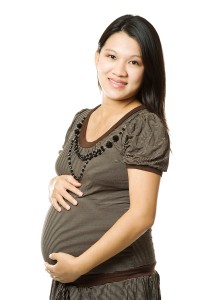Mastitis is described as an infection of the breast tissues, usually affecting breastfeeding women. It usually happens during the initial 3 months after delivery, but can also happen anytime during the breastfeeding period and only affects one breast.
It is due to a clogged milk duct and causing milk to accumulate in the breast and cause infection. The breast can also become infected when bacteria enters the breast through a crack or break on the nipple.
Symptoms of mastitis
- Swelling breast
- Breast is tender or warm when touched
- General feeling ill or malaise
- Continuous pain or burning sensations while breast-feeding
- Skin turns reddened, usually a wedge-shape
- Fever up to 101 F or higher
Causes

- Breast that is not completely empty at feedings, one of the milk ducts is clogged will result milk to back up and result to breast infection.
- Bacteria present on the surface of the skin and on the mouth of the baby can enter the milk ducts through a crack or break on the skin of the nipple or through the opening of the milk duct
Treatment
- Take plenty of rest especially with the baby in bed to promote a healthy immune system. Feed the baby regularly by lying in bed and the same time relaxing in bed.
- Maintain a regular feeding schedule for the baby through the infection to help unblock the milk duct. It also prevents making the stagnant milk becoming infected.
- Massage the blocked breast to release the solidified milk ducts and alleviate the swelling.
- Apply hot and cold compresses on the affected breast. Prepare a cold compress by placing some ice cubes in plastic bag. Prepare a hot compress by wrapping hot water bottle using a thin towel. Apply the hot compress in the affected breast for at least 15 minutes and then follow it up with the cold compress for around 5 minutes. This should be repeated 2-3 times every day. Heat increase blood circulation, lessen the swelling and proper flow of milk. Another alternative is taking a warm baths and showers before or after feeding the baby is also good for the condition.
Tips
- Wear loose and comfortable clothing to avoid friction against the nipple.
- Make sure the baby latches properly into the breast when feeding.
- Nursing mother needs adequate rest and sleep to lessen the risk of infection.
- Avoid using the breast as pacifier.
- Avoid being stressed to prevent complications.
